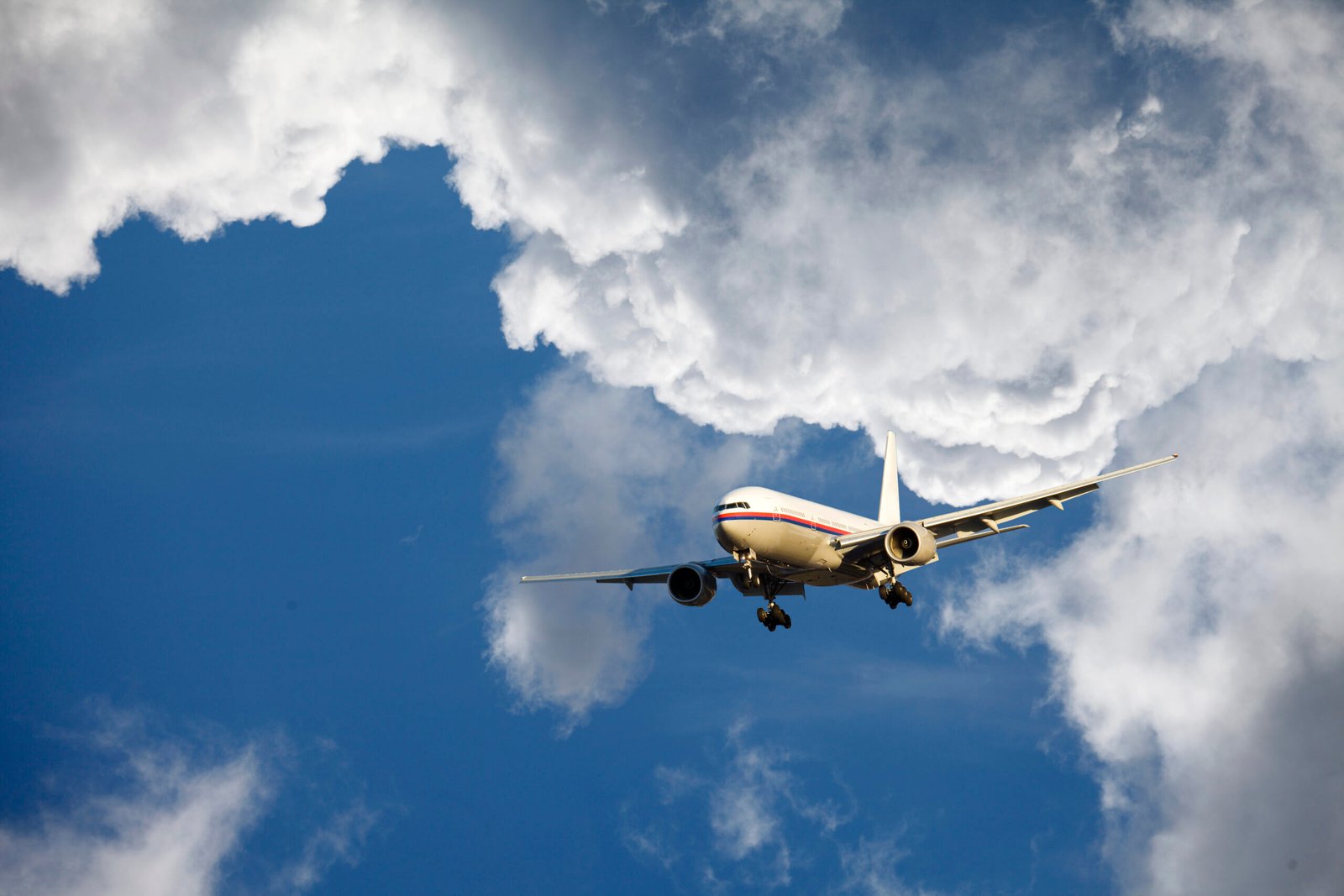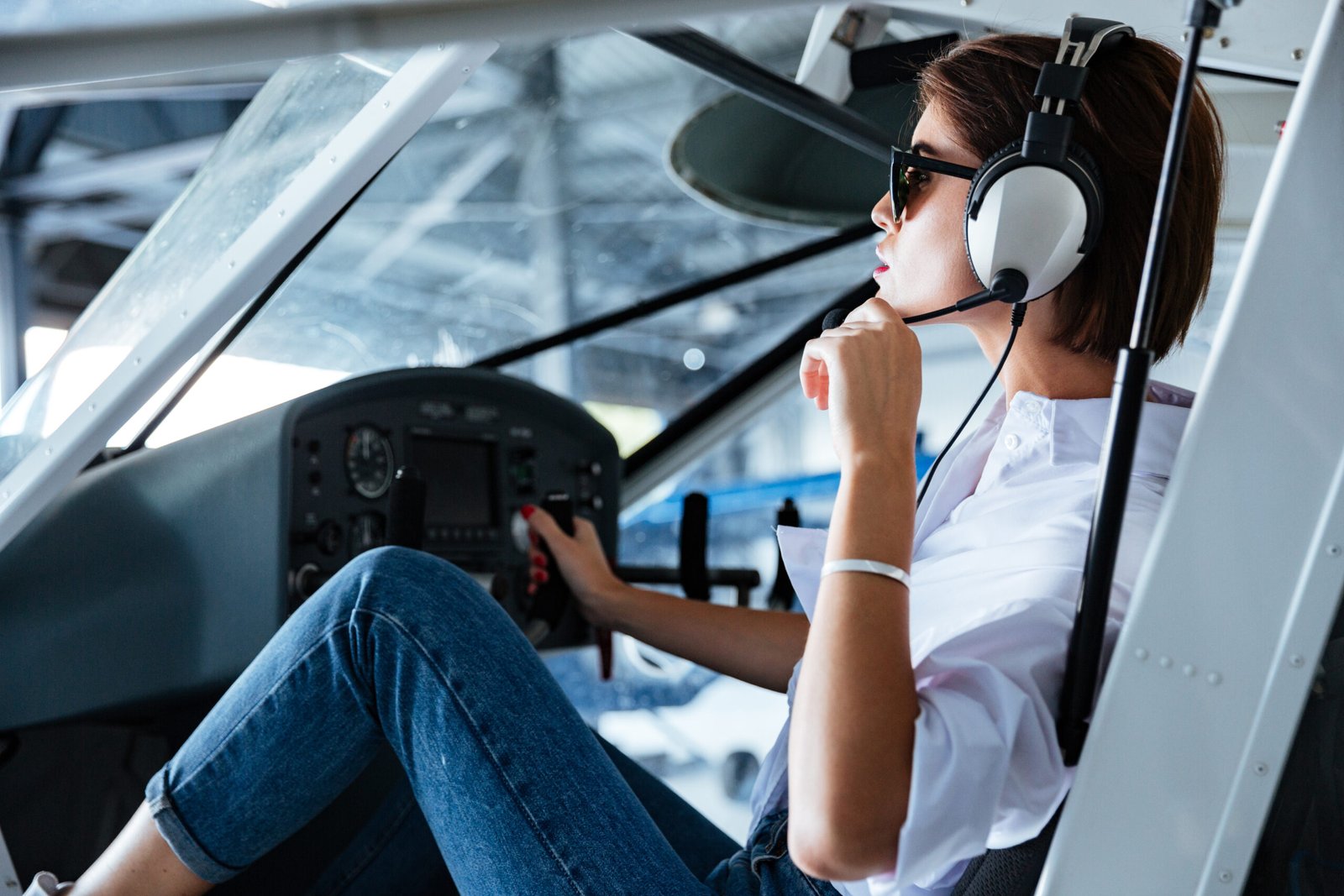Flying
From Runway to Cloud: The Journey of an Airline Pilot
Becoming an airline pilot is a dream that dances in the minds of many aviation enthusiasts. But the journey from runway to cloud is paved with rigorous training, education, and passion. Let’s explore the diverse educational paths available for aspiring pilots, valuable online resources, and the critical role of FAA-approved flight schools.
*Aviation Schools by Types of Courses**
When it comes to pursuing a career in aviation, the choices can be overwhelming. Aviation schools offer various courses catering to different aspirations within the field:
1. **Private Pilot License (PPL) Programs:** These courses introduce students to fundamental flight principles, including navigation and aircraft operations. Ideal for those who want to fly recreationally or gain foundational skills.
2. **Commercial Pilot License (CPL) Courses:** For those aiming to make flying their profession, CPL programs dive deeper into advanced flying techniques, regulations, and flight planning.
3. **Airline Transport Pilot (ATP) Certification:** This is often regarded as the pinnacle of pilot certifications. ATP courses prepare candidates for positions with airlines and cover extensive knowledge on multi-engine operations and complex aircraft systems.
4. **Flight Instructor Ratings:** Many pilots choose to become Certified Flight Instructors (CFI) after obtaining their CPL or ATP credentials. This path allows them not only to gain hours but also share their passion for flying with future aviators.
5. **Specialized Training Programs:** These include courses on specific aircraft types or advanced maneuvers such as aerobatics or bush flying—perfect for those looking to specialize further.
*A List of Aviation Blogs, Websites, and Social Media Sites**
In this digital age, staying informed about trends in aviation is easier than ever! Here are some must-follow blogs and websites:
**Airline Reporter:** This blog covers airline news with a focus on technology and travel experiences.
**AvWeb:** A comprehensive source for aviation news that includes articles on safety issues and industry updates.
**Flying Magazine:** A well-respected publication that offers insights into pilot training, aircraft reviews, and real-life flying stories.
For social media enthusiasts:
**Instagram (@aviationdaily):** Follow stunning aerial photography showcasing breathtaking views from above.
**Twitter (@airlinepilotlife):** Tweets from airline pilots sharing day-to-day experiences in the cockpit.
**YouTube Channels like “Captain Joe” provide educational content alongside entertaining vlogs about life as a pilot.
*FAA Flight Schools/Airplane Schools/Simulators**
Navigating through your choices requires attention when selecting an FAA-approved flight school. These institutions adhere strictly to federal regulations ensuring high training standards:
**Part 61 vs Part 141 Schools:** Part 61 schools offer more flexible schedules tailored for working individuals while Part 141 schools provide structured curriculums ideal for full-time students aiming at quicker completion times.
**Simulator Training Facilities:** With advancements in technology, many flight schools incorporate advanced flight simulators into their curricula. Simulators allow students to practice emergency procedures safely without leaving the ground—an invaluable part of modern pilot training.
As you embark on this fascinating journey toward becoming an airline pilot—from mastering theoretical knowledge at a classroom desk to soaring through clouds—it’s essential to immerse yourself fully in both educational resources and community connections within aviation circles. Each step taken builds towards that exhilarating moment when you take control of an aircraft destined for horizons unknown!

Soaring High: The Evolution of Aviation Technology
Aviation has come a long way since the Wright brothers took their first flight in 1903. Today, it encompasses a vast array of technologies and educational pathways that continue to evolve at an astonishing pace. As we delve into the realm of aviation technology, let’s explore the various types of aviation schools offering specialized courses, some noteworthy online resources, and prominent FAA-approved flight training institutions.
### Types of Aviation Courses
Aviation schools are diverse and provide a variety of programs tailored to meet different interests within the industry. Here are some common types:
1. **Pilot Training Programs**: These are perhaps the most sought-after courses, ranging from private pilot licenses to commercial and airline transport pilot certifications. Students learn about navigation, meteorology, and aircraft systems while getting hands-on flying experience.
2. **Aircraft Maintenance Engineering**: For those fascinated by the mechanics behind flight, this path offers education on maintaining and repairing aircraft. Courses often cover airframe structures, engines, avionics systems, and more.

3. **Aerospace Engineering**: This discipline dives deeper into designing aircraft and spacecraft. Students study aerodynamics, propulsion systems, materials science, and structural analysis—essentially crafting the future of aviation technology.
4. **Air Traffic Control**: Individuals who excel in multitasking can pursue careers as air traffic controllers through specialized training programs that include simulation exercises to prepare for real-world scenarios.
5. **Flight Attendant Training**: This course equips aspiring cabin crew members with skills in safety protocols, emergency procedures, customer service techniques, and cultural sensitivity essential for working in diverse environments.
6. **Aviation Management**: Focusing on the business side of aviation, these programs teach students about airport operations, airline management strategies, marketing within aviation sectors, and regulatory issues affecting air travel.
### Online Resources for Aviation Enthusiasts
The digital age has brought forth an abundance of platforms dedicated to all things aviation. Here’s a curated list of blogs and websites where enthusiasts can stay informed:
**Airliners.net**: A vibrant community where users share photos and discussions regarding airlines globally.
**Flying Magazine**: With articles ranging from gear reviews to pilot stories; it’s an excellent resource for both novice flyers and seasoned aviators alike.
**AVWeb**: Offers daily updates on news related to general aviation along with insightful columns from industry experts.
Social media also plays a vital role in connecting like-minded individuals:
Follow hashtags like #AvGeek or #PilotLife on Instagram or Twitter for stunning visuals from fellow aviators.
Join Facebook groups such as “Pilots of America” where members share experiences or seek advice.
### FAA Flight Schools & Simulators
When considering formal training paths recognized by authorities such as the Federal Aviation Administration (FAA), it’s crucial to select accredited schools that meet rigorous standards:
**Embry-Riddle Aeronautical University** is renowned for its comprehensive programs covering every aspect of aviation.
**Purdue University’s School of Aviation Technology** not only offers degrees but also state-of-the-art simulators that provide realistic training experiences before stepping into an actual cockpit.
Local flight schools across states often offer personalized instruction with small class sizes ensuring hands-on learning opportunities alongside classroom knowledge.
In conclusion, as technology continues its relentless march forward—from advanced avionics systems to virtual reality simulators—the landscape of aviation education is becoming increasingly rich and varied. Embracing this evolution opens up exciting possibilities for aspiring pilots and industry professionals alike as they prepare to soar high above in their chosen careers!
Unmasking the Mysteries of Flight: How Airplanes Really Work
Aviation has long captivated our imaginations, from the first daring flights of the Wright brothers to today’s colossal jetliners soaring through the skies. But have you ever wondered how these marvels of engineering actually work? Beyond the awe-inspiring takeoffs and landings lies a world rich with knowledge that can be explored through various avenues, such as online aviation courses, ground schools, and vibrant aviation communities.
For those eager to dive deeper into the mechanics of flight, online aviation courses are an excellent starting point. These courses cover everything from fundamental aerodynamics to advanced navigation techniques. They cater not only to aspiring pilots but also to enthusiasts looking to understand the intricacies of aircraft systems. Platforms like Coursera and Udemy offer structured learning paths led by industry professionals who share their insights and experiences. Through interactive modules and video lectures, students can gain a solid grounding in aviation principles at their own pace.
Ground schools serve as another invaluable resource on this journey toward becoming a pilot or simply understanding aviation better. These schools often provide both classroom instruction and practical training in flight simulators. Whether in-person or virtual, ground school programs cover essential topics such as weather conditions, regulations, and emergency procedures—knowledge crucial for every aviator. Enrolling in a reputable ground school not only fosters technical skills but also instills confidence in navigating complex flying scenarios.

With proper education comes opportunity! The realm of aviation offers diverse career paths for those passionate about flying. Becoming a pilot is perhaps one of the most sought-after professions; however, it’s worth noting that there are numerous roles within this industry—from air traffic controllers to maintenance technicians and flight engineers. As commercial air travel continues to expand globally, so does the demand for qualified personnel across various sectors within aviation.
Engaging with fellow enthusiasts can significantly enhance your understanding of flight mechanics too! Aviation forums and communities like PPRuNe (Professional Pilots Rumour Network) or AvGeek groups on Reddit serve as platforms where individuals share experiences, insights, tips, and advice about all things airborne. These forums create a sense of camaraderie among pilots and hobbyists alike—offering support during training or sharing stories from thrilling flights around the world.
If you’re seeking even more resources to fuel your passion for aviation, numerous blogs and websites provide endless information on current events within the field alongside technical knowledge. Some popular blogs include “AirlineReporter,” which covers airline industry news with an engaging twist; “The Flying Engineer,” focusing on engineering aspects; or “Flight Chic,” which explores fashion within air travel culture.
Social media platforms also play a pivotal role in connecting aviators globally. On Instagram alone, hashtags like #AvGeek or #PilotLife showcase stunning photographs from cockpit views to breathtaking aerial shots that inspire wanderlust among followers. Twitter is another great avenue for real-time updates from industry experts while YouTube channels dedicated to aviation documentaries offer visually captivating narratives that unravel complex concepts behind aircraft functionality.
In conclusion, whether you’re dreaming of becoming a pilot or simply intrigued by what makes airplanes soar through clouds effortlessly—there’s no shortage of resources available today! From online courses that educate aspiring aviators to interactive forums fostering community engagement, each aspect unravels layers upon layers of knowledge waiting for exploration in this fascinating domain called aviation!


